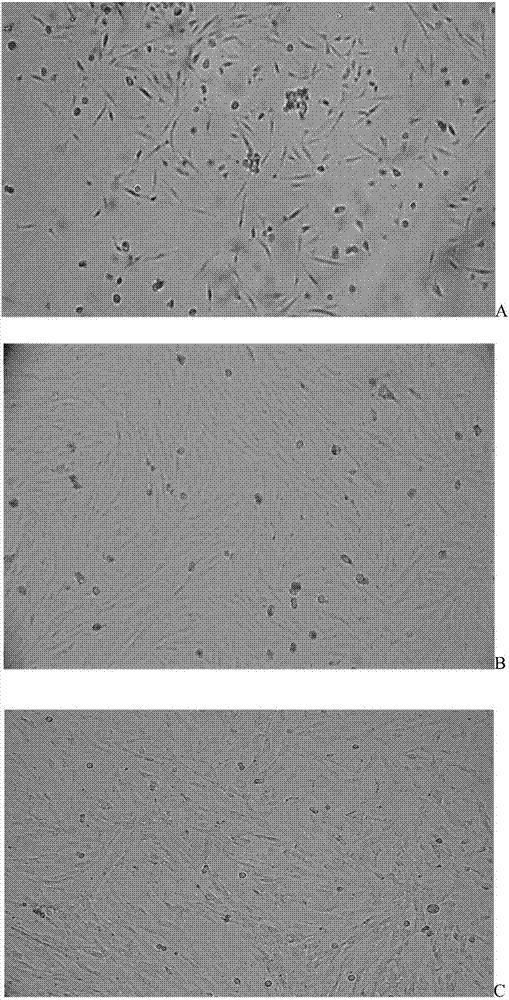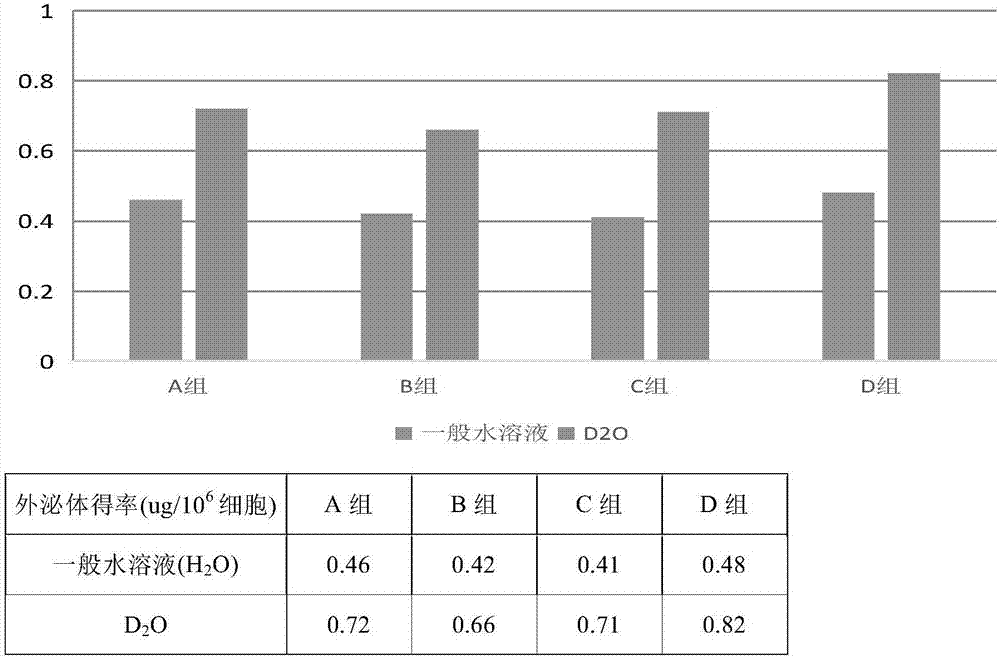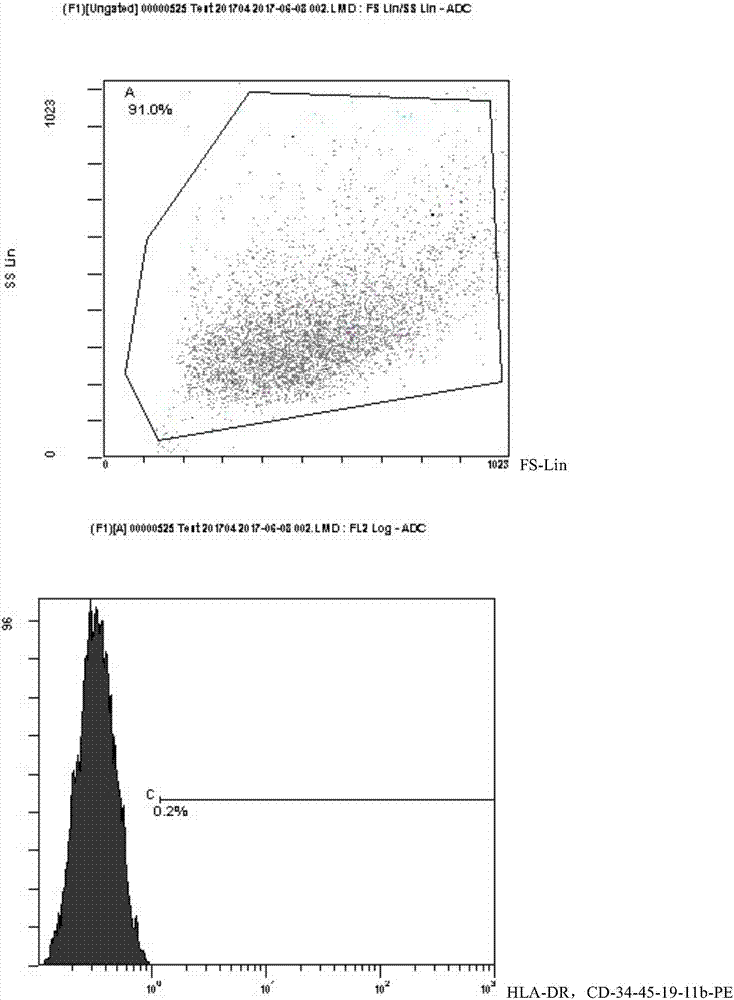Method for separating exosome from human umbilical cord mesenchymal stem cell source and reagent used by method
A technology for stem cells and human umbilical cord blood, which is used in the separation and acquisition of exosomes from human umbilical cord blood mesenchymal stem cells, the use of reagents, the acquisition of membrane vesicles involved in cell biological activities, and the application field in cell repair, which can solve the problem. Problems such as low yield and low exosome purity
- Summary
- Abstract
- Description
- Claims
- Application Information
AI Technical Summary
Problems solved by technology
Method used
Image
Examples
Embodiment 1
[0145] Embodiment 1, umbilical cord blood MSC culture
[0146] 1.1. Collection of umbilical cord blood:
[0147] Select the umbilical cords of full-term newborns (immediate family members are required to have no history of major diseases in the past, the collection process must be strictly aseptically collected, and the blood volume should be collected at least 50ml), and the umbilical cord blood will be collected in disposable sterile plastic blood collection bags, and transported throughout the whole process Keep fresh at low temperature.
[0148] 1.2. Cord blood pretreatment:
[0149] The collected umbilical cord blood was transferred to a new centrifuge tube through a filter with a pore size of 100 μm to remove excess blood clots.
[0150] 1.3. Cord blood mononuclear cell extraction:
[0151] 1.3.1. Mix the filtered umbilical cord blood (for example, take 50ml) and PBS at a ratio of 1:1 (the total volume is 100ml) to obtain a cell suspension, and then take 15ml of the...
Embodiment 2
[0166] Example 2, Extraction of Cord Blood MSC Exosomes
[0167] Following Example 1, this Example 2 was carried out.
[0168] 2.1. Pretreatment of exosome suspension
[0169] 2.1.1. Source of exosomes 1
[0170] When the confluence rate of P3 generation umbilical cord blood MSC reaches 75%-85%, try to collect the medium in the culture bottle and put it in a 4°C refrigerator for later use.
[0171] 2.1.2. Source of exosomes II
[0172] Use 50ml of PBS to overfill the culture bottle that has removed the medium, put the P3 generation cell culture bottle of umbilical cord blood MSC filled with PBS into a volume fraction of 5% CO 2 The culture was carried out in a saturated humidity incubator, and the umbilical cord blood MSC cells were starved for 24 hours, and then the PBS in the culture flask was collected.
[0173] 2.1.3. Source of exosomes III
[0174] 2.1.3.1 For the P3 cord blood MSCs starved by PBS, digest the cells in the culture flask by adding 0.25% trypsin-0.0...
Embodiment 3
[0193] Embodiment 3, umbilical cord blood MSC flow detection
[0194] 3.1. When the umbilical cord blood mesenchymal P3 cells grow to 75% to 85% confluent, remove the original culture medium in the culture bottle, wash each bottle with 50ml of PBS, digest the cells with 0.25% trypsin and centrifuge , centrifuge at 1400rpm / min, ascending speed 9, descending speed 9, 10min.
[0195] 3.2. Resuspend the P3 cells with PBS to 1*10 7 Cells / ml, add mouse anti-human monoclonal labeled antibody
[0196] CD90-PC5, CD105-PC7, CD73-FITC, HLA-DR / CD-34 / CD-45 / CD19 / CD11b-PE, mouse anti-human igG1-FITC, igG1-PE, igG1-PC5, igG1-PC7 as an isotype control.
[0197] 3.3. Incubate at room temperature in the dark for 20 minutes, and detect by flow cytometry. The results showed that the isolated cells expressed mesenchymal stem cell surface antigens CD73, CD90, and CD105 above 99%, but did not express HLA-DR, CD-34, CD-45, CD19, and CD11b below 0.5%. See the results image 3 . Depend on imag...
PUM
| Property | Measurement | Unit |
|---|---|---|
| diameter | aaaaa | aaaaa |
| diameter | aaaaa | aaaaa |
Abstract
Description
Claims
Application Information
 Login to View More
Login to View More - R&D
- Intellectual Property
- Life Sciences
- Materials
- Tech Scout
- Unparalleled Data Quality
- Higher Quality Content
- 60% Fewer Hallucinations
Browse by: Latest US Patents, China's latest patents, Technical Efficacy Thesaurus, Application Domain, Technology Topic, Popular Technical Reports.
© 2025 PatSnap. All rights reserved.Legal|Privacy policy|Modern Slavery Act Transparency Statement|Sitemap|About US| Contact US: help@patsnap.com



